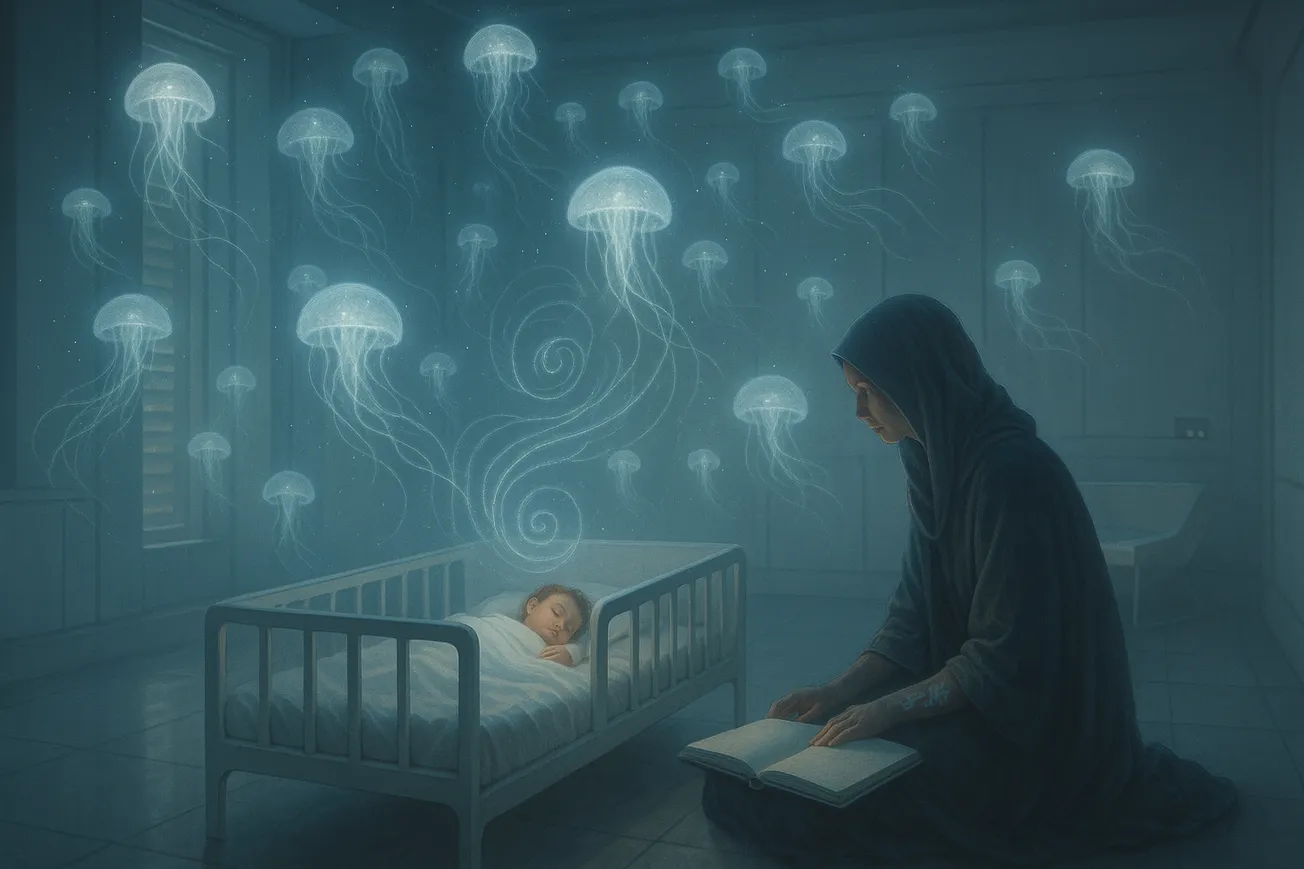🌈 The Fractal Story Engine | Mind & Meaning | (11) MM-003-D2
The city that replaced Lysoria was built without scales.
Not metaphorically. They were banned. No brass balances between buildings. No silver trays in plazas. No curved weights on kitchen shelves. Even metaphor was policed. The idea of weighing was quietly extracted from language, culture, dream.
In its place: harvest.
Thoughts were not valued. They were collected. Coursed through neural nets, filtered for utility, trimmed of fragrance and ambiguity, and filed into the Archive of Certainties. The process was clean. Sanitary. Profitable. And entirely silent.
Until the child.
Born during the quiet hour, under a sky lit with artificial constellations, they arrived without measure. No cognitive signature. No predictable response patterns. Not even a blink that could be logged.
The analysts called it null-mind.
She did not speak. Yet Thoughtforms came.
Each night, without sound or ceremony, they gathered. Soft, phosphorescent shapes drifting like dandelion ghosts through the slats of the ministry nursery, circling her bed in patterns that defied capture. Spirals none could trace.
The Ministry issued denials. The nursery was sealed. Surveillance failed. Cameras refused to record. Even memory fragments retrieved from staff dissolved into nonsense or prophecy.
So they sent an analyst with a different clearance.
Her name is not recorded. Only her occupation: Continuity Integrity Liaison. She arrived at dusk with two books. One held approved folktales. The other was blank.
She read aloud from the first. Standardized myths, vetted and diluted, meant to soothe.
The child slept.
Then she opened the second.
And waited.
The room was quiet.
Until the first glyph appeared.
When she laid the second book beside the child’s data sheath, something flickered. A glyph, three strokes curving toward absence, appeared and vanished. The analyst wept without understanding why.
She returned the next night. And the next.
Each time, she brought the blank book.
Each time, the pages filled.
Never in ink. Never by hand. But when the child slept, symbols arrived. They hovered first, like thoughts testing their own weight, then settled into lines.
She did not write them. She bore witness.
Others tried to transcribe the shapes. They failed.
Others tried to interpret the forms. They wept, or screamed, or forgot their names.
By the end of the third week, she stopped reporting.
By the end of the fourth, the glyphs reached the margins of her body.
They did not burn. They softened her.
No voice. No command. Just presence.
Around her, the Thoughtforms bowed.
Then one by one, they entered her, turning to ink, then wind, then music with no notes.
The analyst knelt. Her name left her like steam. She held the child’s hand.
The city did not end. Not visibly.
But the Ministry panicked.
Tests failed. Neural maps collapsed into static. Every electrode returned fragments: shards of story, untraceable myths.
A bowl catching rain.
A weaver without name.
A silent rebellion where no record should be.
That year, fewer thoughts were harvested.
That decade, the Archive of Certainties dimmed.
A question passed from mouth to mind, city to city, dream to dream.
What is the worth of a thought that cannot be measured?
And in one nursery, no longer sealed, a child opened her eyes.

